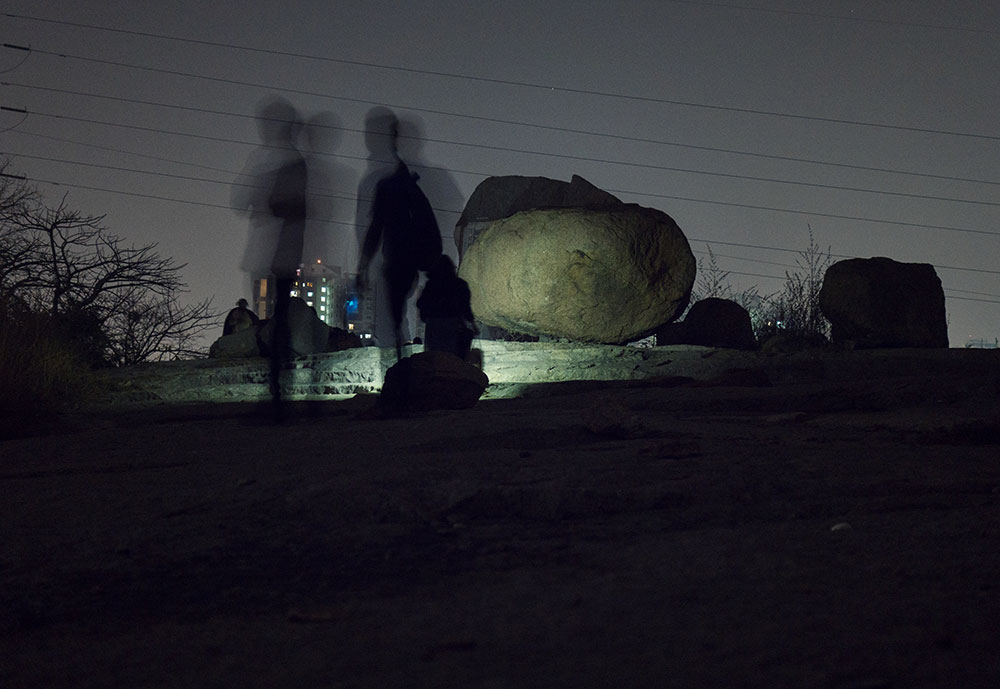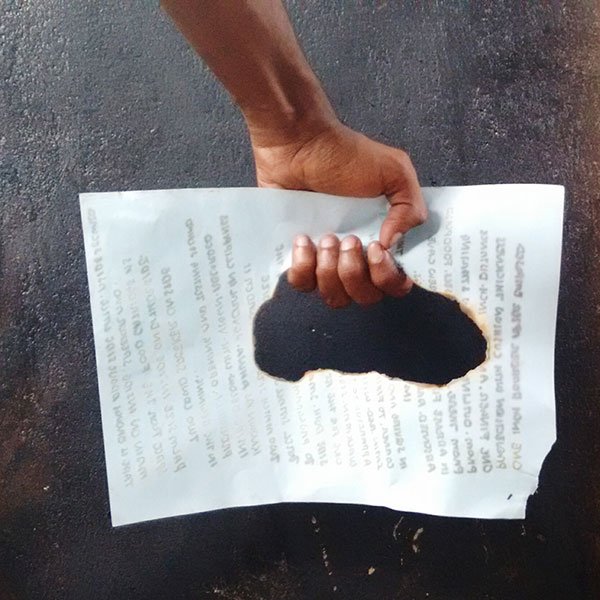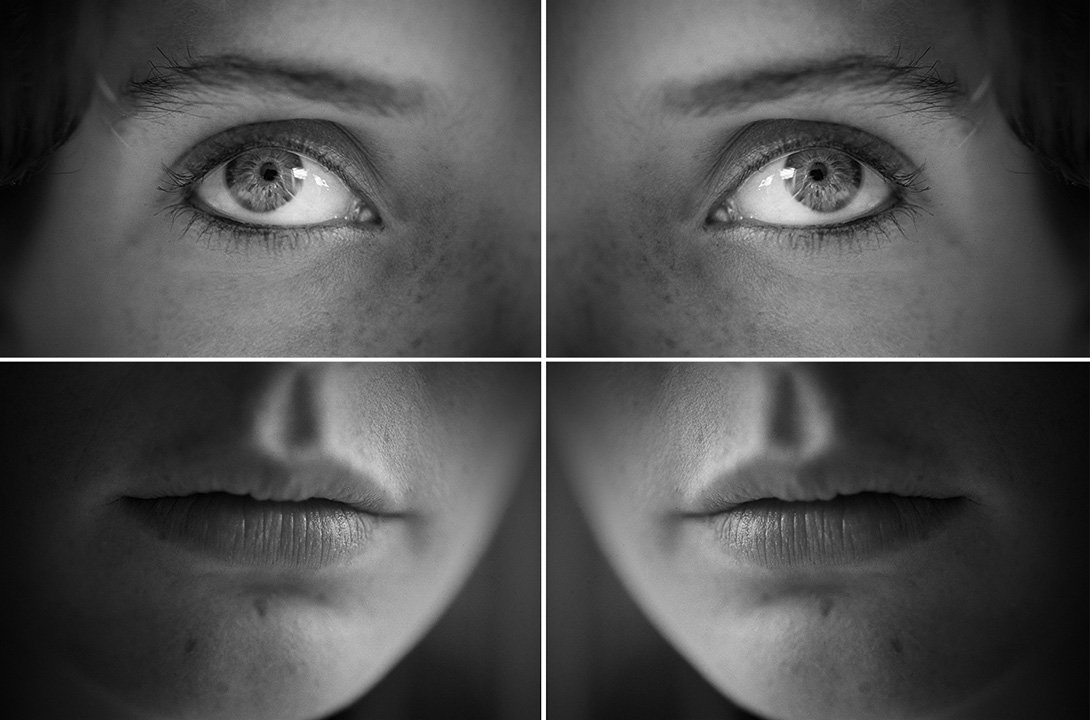Panorama
Photo Mail presents
A panoramic view of
The art of photography’s
Interaction and
Interrelation with other
Art mediums such as literature
Architecture, and
Other visual media
Johny ML
writes about
Photography
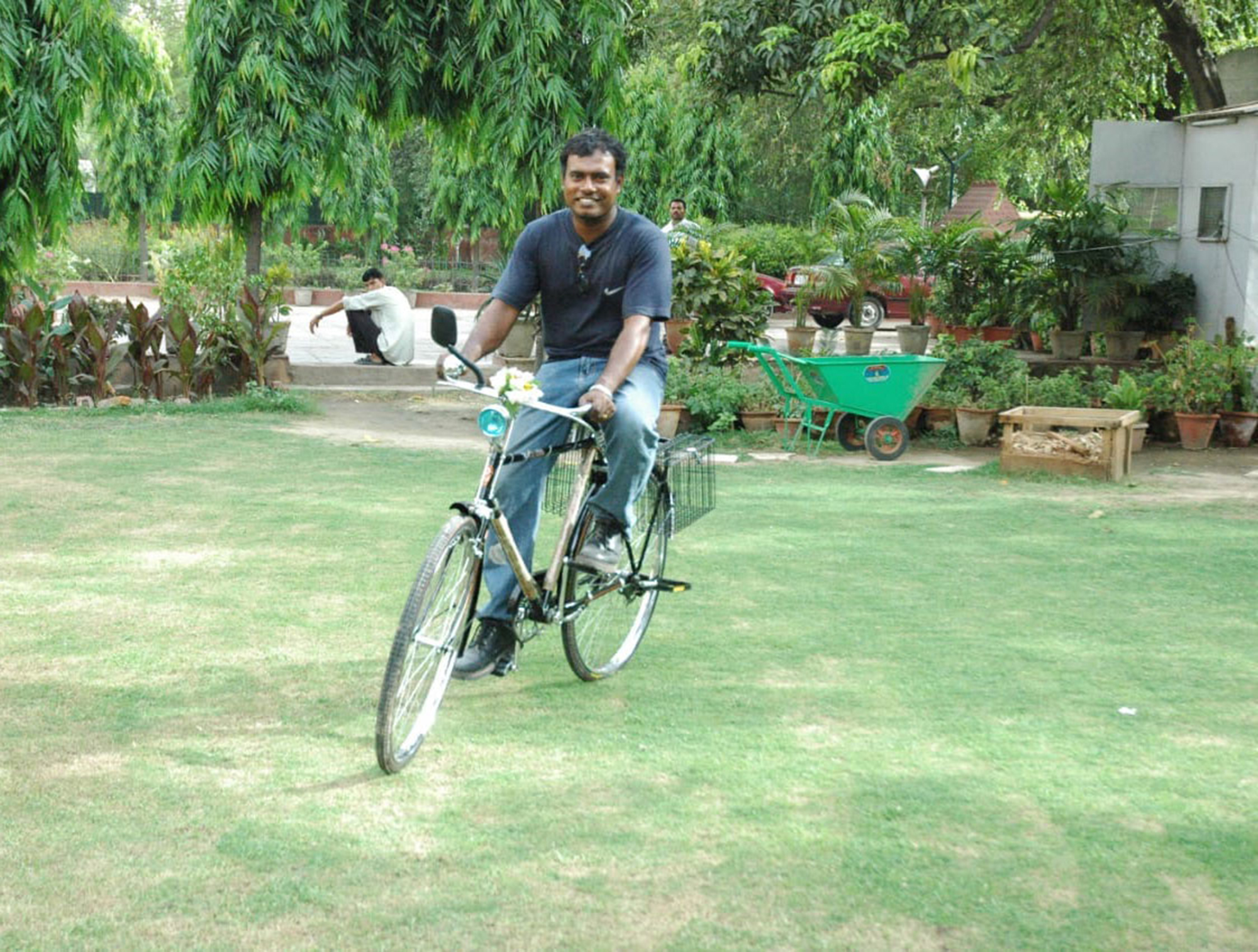
Johny ML at Rabindra Bhavan lawn © Satheesh
Satheesh, a news photographer friend sends in this picture. Looking at it I cringe. I zoom in and see whether it is me, a young-looking person on a new bicycle. I had forgotten all about that ride. I try to remember the day. Someone’s new bicycle; the unremoved covers on the frame heralds its newness for in the northern parts of India people do not remove the cover of newly bought vehicles for a long time. You may see cars with one-year-old polythene covers on their seats. What had been started off as an owner’s reluctance to tamper with a precious acquisition has now become a superstitious ritual!
From the baggy parallel trousers made of cheap denim bought from the Janpath market, one of the haunts of people who desperately look for things that make them appear hip, the pair of black shoes with lace, the fake Nike T-shirt and the goggles dangling from it I could sense a different me who is just unlike the present me and I wonder have I ever been so! Time changes people and the photographs fix them to those moments of unperceivable transformation. And lo, one fine morning which is an aggregate of many bad mornings, one wakes up to see his irrecoverable metamorphosis. It should send one into a panic but often it does not as all the transformations are not Kafkaesque.
The location is Rabindra Bhavan, Mandi House, New Delhi, the seat of three academies (Fine Arts, Music, and Literature). It also has a three storey gallery designed by Habib Rahman, an erstwhile PWD Engineer, and father of noted photographer and activist, Ram Rahman, where hopeful artists come from faraway places to make it big in the art scene. There is a subsidized canteen behind the building where artists, actors, and poets of the pre-internet days gathered to develop strategies to deal with the world of arts. The lawn where the cycle and a strange me on it are seen was the meeting point for the artists. Today, I do not think the authorities even allow people to hang out there. Times have really changed.
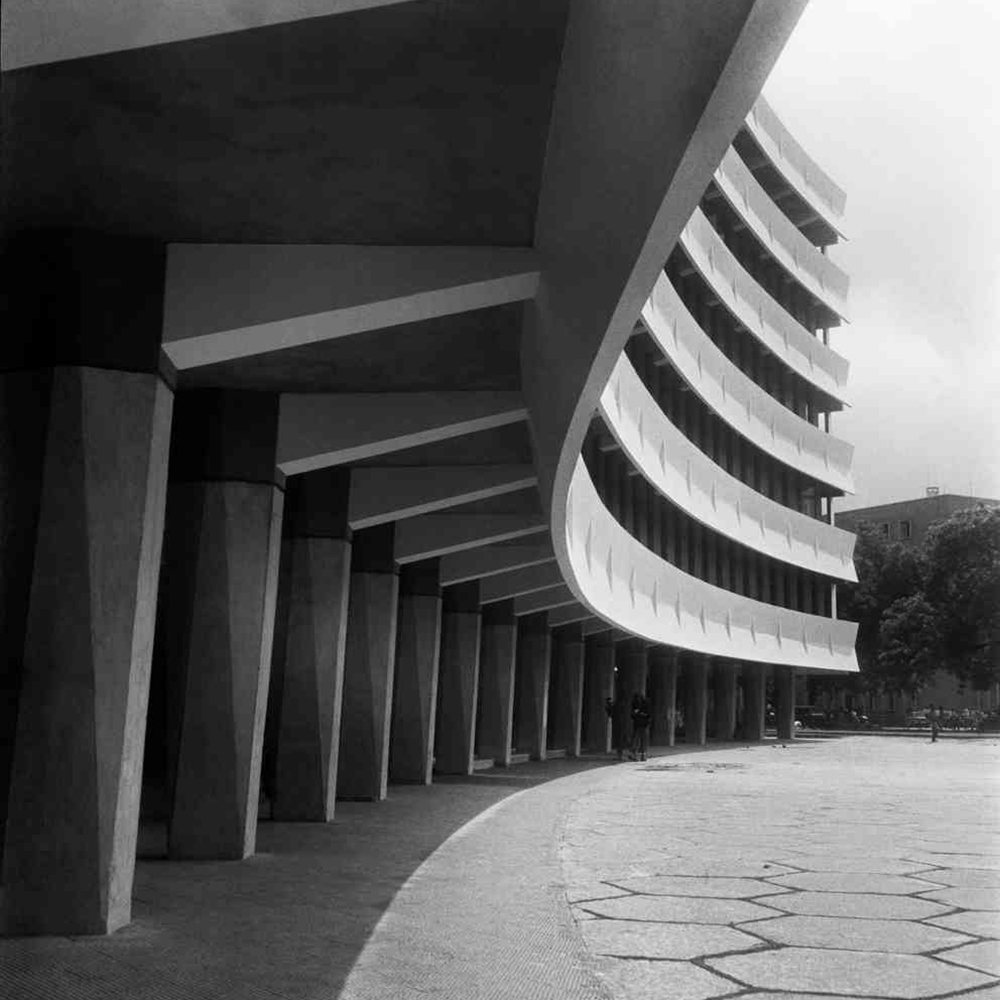
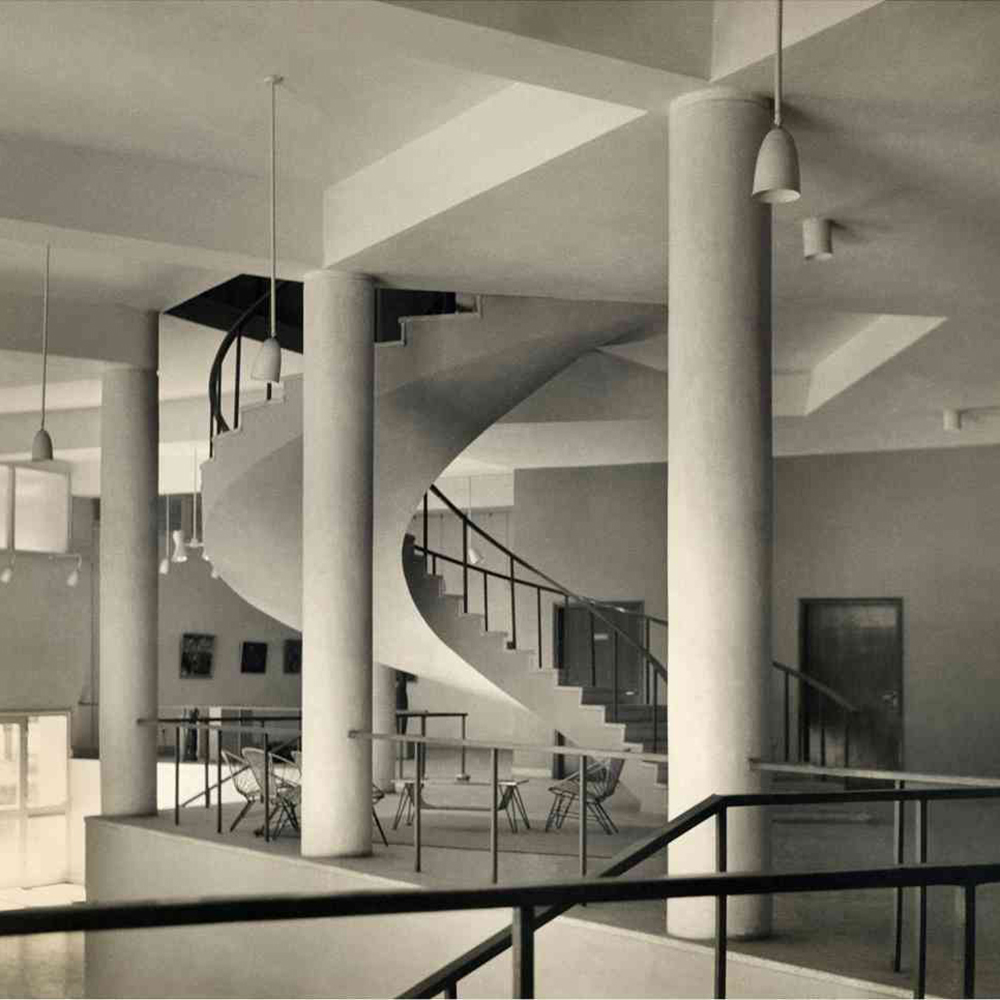
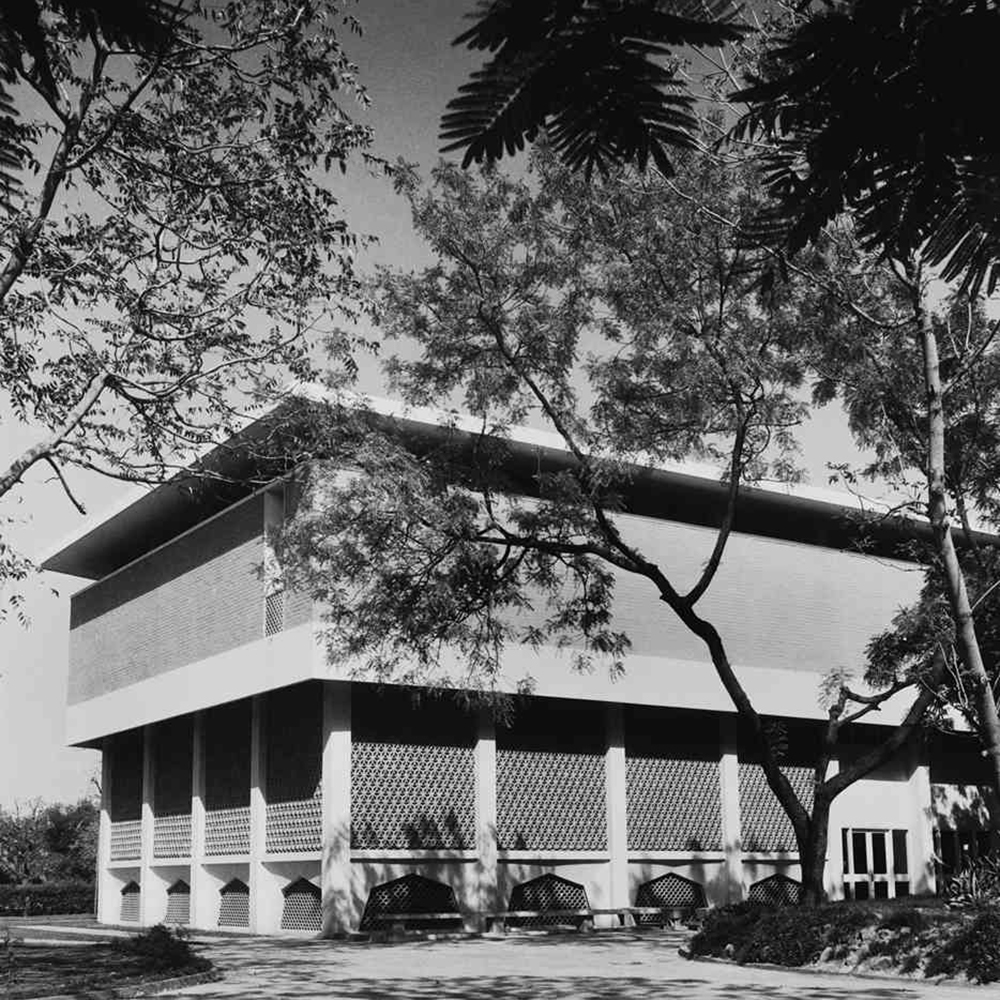
Rabindra Bhavan | Design and Photography by Habib Rahman
The bicycle does not belong to me. But from the sheer joy emanating from my face I could say that I am extremely happy to be on it perhaps after a long time. My face becomes a mirror where the friends standing around and cheering me are reflected. In Baroda, as a student, I had a cycle that became an inseparable companion for two long years. In Delhi, I couldn’t have afforded one. It was the mid-1990s and artists were poor, so were the aspiring art historians. By the time we all became moderately well off, bicycles were no longer in fashion; cars and motorbikes had taken over the roads of Delhi.
You don’t want to look at the photograph. But it still has a strange attraction. It is not the strangeness of the image that you hesitate to identify with but the sheer amount of time that lays frozen within the simple and not so aesthetically mediated frame. The precariousness of the rider in fact is emblematic of the staggering times; the green lawn expresses the hope of all who gather there unfailingly every day as if it were a holy communion. We have travelled a long way and the strangeness of a photographic image can angle you back temporarily and the hooking is painful. However, I have never ceased to be a bicycle rider. I enjoy riding one and the photographs that friends take me with the cycle now look absolutely pleasant and free.
What is there in an old photograph, a meaning, a few memories, or something that you want to forget forever? One is not sure. But a photograph, though severely manipulated, can give away the truth of the moment; if not of the model who is in the picture but of the photographer who is invisible and registering his gaze for accidental findings in the future.
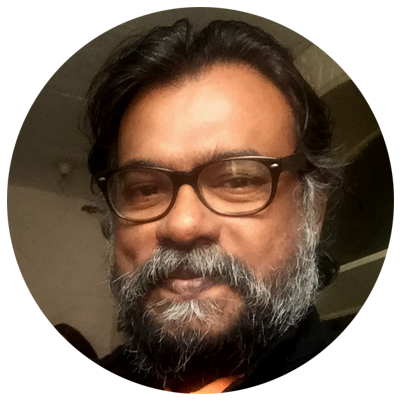
Johny ML is a writer, translator, art historian, art critic, art curator, editor of art magazines, poet and a prolific blogger. He has three post graduate degrees in Creative Curating, Art History and Criticism, and English Language and Literature. His writings related to arts, culture and politics have been published in several print magazines like Creative Mind, Art Illustrated, newspapers and weeklies in English and in Malayalam. He also founded and edited many popular online art journals. He has been an editor of the Art and Deal magazine also has guest edited Art Etc. He contributes to Art India Magazine, Creative Minds, Art Journal and many other exclusive art magazines. Currently he writes in Stance Magazine and naradanews.com. He is one of the pioneering curators in India. He has authored eight independent books so far and has contributed to various volumes, and translated thirteen books so far. Johny ML lives and works in Trivandrum, Kerala.
Published on December 7, 2020
Share
Related Articles
A Sense of Dislocation
Indian photography hasn’t seen many such explorations that interact and intersect with other media such as light art. But this has started to change in the last couple of years, with a few photographers trying to do light painting; and it is in this context that Joyel K Pious and Gaurav Rachamalla’s collaborative photo project becomes striking. Although this style is popular in the west, this collaborative project stands tall and distinctive amidst the usual Indian street and documentary photographs. It probes the philosophical underpinnings that are intrinsic to the medium itself as well as pose several questions related to urbanisation.
On Ajith Nedumangad’s Photographs
It is the sheer absurdity of the sculptures created and photographed by Ajith that hits the viewer right from the off – juxtapositions (reminiscent of the Dadaists and Surrealists) in which materials and the forms they are used to create are often in conflict with each other and, at other times, are self-referential in a darkly humorous manner.
On Photography, Remembering Susan Sontag
On Susan Sontag, a poem by famous Malayalam-English poet N Ravi Shankar


